
Parts Of A Violin (And How To Fix Them) Violin, Violin teaching, Violin lessons
What Are the Different Parts of a Violin and How Do They Work? Learn About the Violin's 20 Key Components Written by MasterClass Last updated: Sep 29, 2021 • 7 min read A great violinist must build up a cache of knowledge in many disciplines.

"Parts of the Violin" Poster Violin, Poster, Violin parts
Right? In this article, we're going to look at all the main terminology. Here's a brief overview of the bits and pieces we discuss: Contents [ show] Parts of the Violin Nut The nut is found at the farthest point away from the musician, between the pegbox and the fingerboard.

Violin Knowledge Fascinating Violin Facts Anatomy Of A Violin ubicaciondepersonas.cdmx.gob.mx
The neck of the violin, which has the fingerboard glued to the top of it and connects the peg box to the body, is the part of the instrument that sustains the majority of the stress made by the strings.

The Enthusiast's Guide To Each Detail Of The Violin
The neck of the violin is the part of the instrument between the pegbox and the body. The neck allows violinists to hold the instrument. The heel of the violin (not to be confused with the heel of the bow, which is the lower part of the bow near the frog) is the curved piece of wood that connects the neck to the body.

Find Violin lessons in Birmingham
Look below for a complete diagram and description the parts of a violin. Scroll - located at the top of the violin. It's main function is decoration, but right below it is the pegbox where the strings thread through the tuning pegs. Tuning Pegs - Used to tune the violin. Turn the pegs clockwise to tighten the strings, tuning the instrument higher.
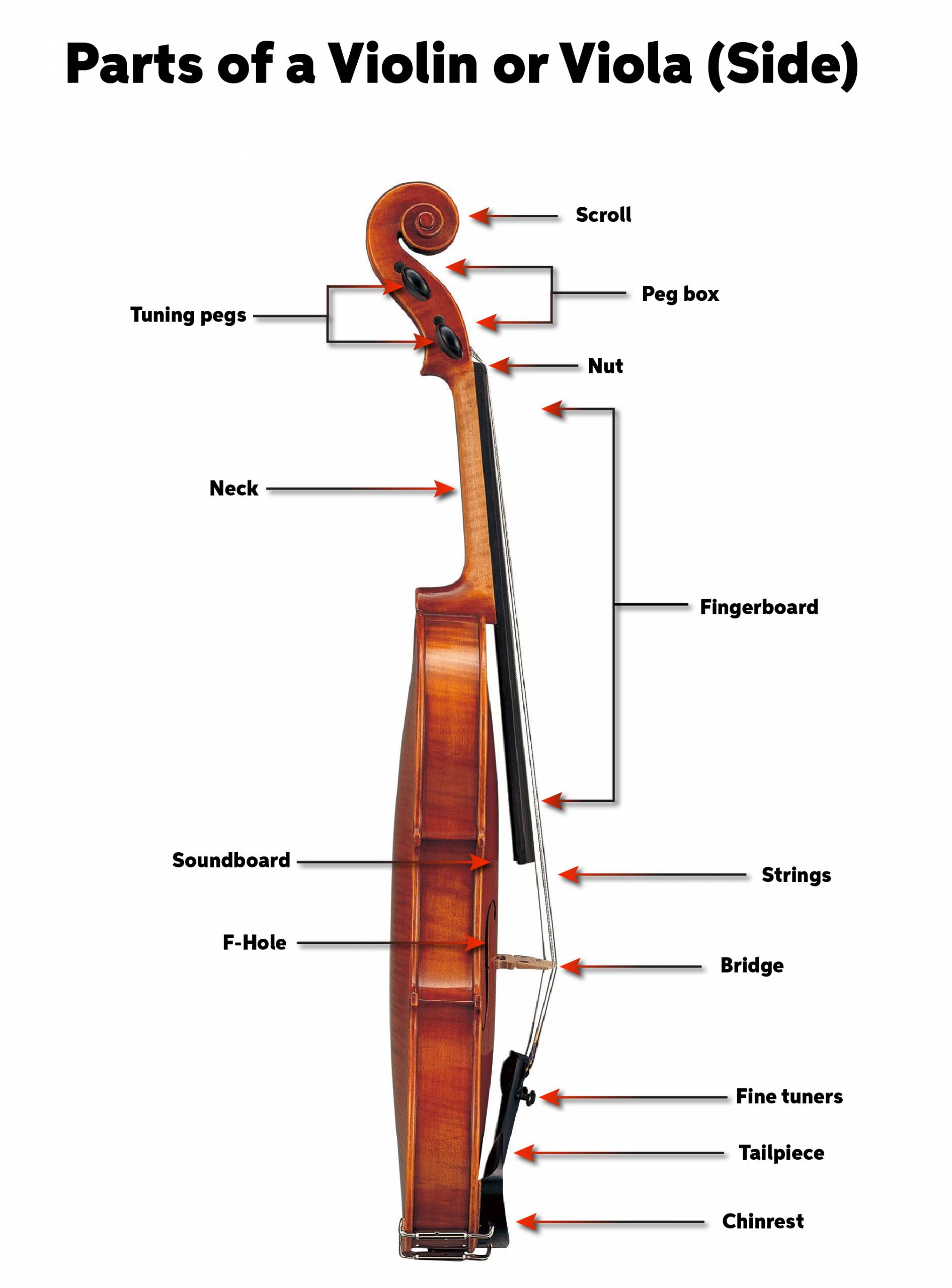
Violin and Viola Quickstart Guide Sweetwater
violin, bowed stringed musical instrument that evolved during the Renaissance from earlier bowed instruments: the medieval fiddle; its 16th-century Italian offshoot, the lira da braccio; and the rebec. The violin is probably the best known and most widely distributed musical instrument in the world. Bach, J.S.:
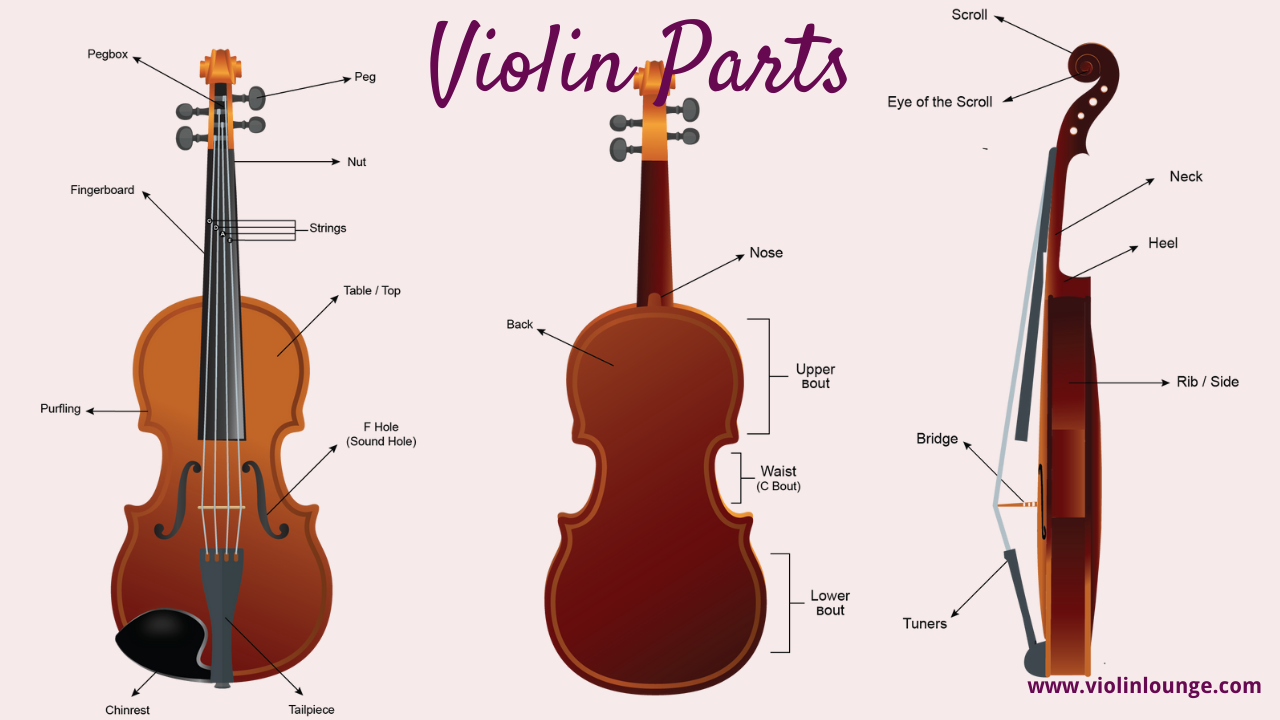
Violin Parts Diagram
The main parts of the violin are easy to recognize and remember because they are named just like parts of a human body. A violin has a neck (where the strings run along), a belly (the front of the violin), a back, and ribs (the sides of the violin). The other parts of the violin might be harder to recognize.
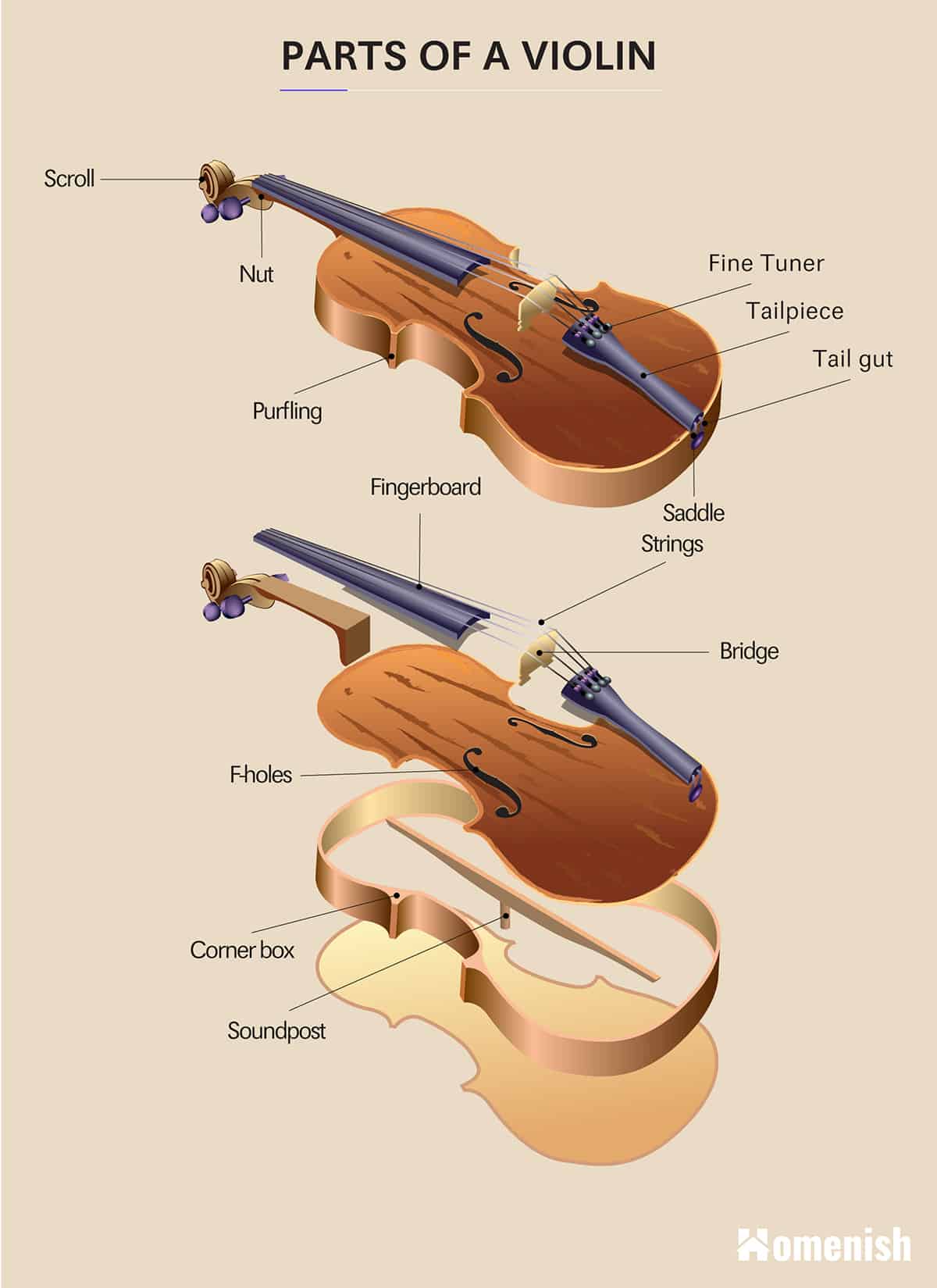
Parts of a Violin (Full Diagram Explored) Homenish
Body. The body of the violin/viola is the main part of the violin/viola and usually made from wood. It can be two halves joined together at the back, or more expensive violins or violas will be made from a single piece of wood at the back. The rest of the violin/viola is made from single pieces of wood stuck together with hide glue.
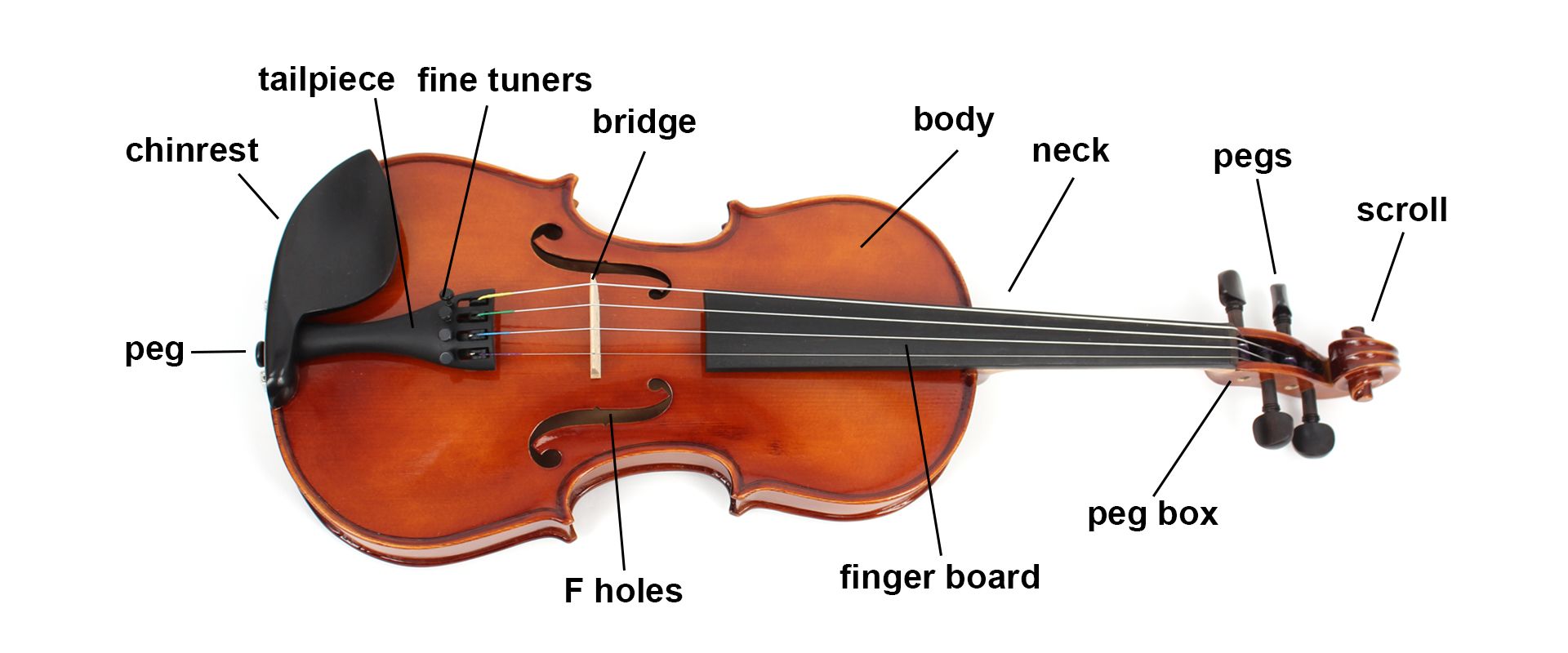
Understanding String Instruments Parts
Written by Catherine Kelman Last updated 28th November 2023 The violin is a beautiful, complex, and delicate instrument. Whilst being an admirable piece of craftsmanship all on its own the violin has been cleverly designed to produce the warm, rich tone it is celebrated for.

Parts of the Violin and Bow Printout/Handout Denley Music
There are four pegs located at the top of the neck or pegbox near where it meets the body of the instrument. Each string is wrapped around a peg, which can be turned to tighten or loosen the string. This changes how high or low each note sounds when played. As you can see, there are many different parts that make up a violin.

Violin Parts Parts Of The Violin Explained In Detail
Parts of the violin (see below for details) Body - The largest part of the violin is the hollow body. Its main function is to amplify the sound of the strings. The body is made up of the back, belly (top) and ribs (sides). The body is shaped like an hourglass. Neck and fingerboard - The neck is the long piece of wood that sticks out from the body.

3 Tips for the proper maintenance of violin and viola
Top & Back. The top and back are two large arched pieces of single wood. The age and quality of the wood used for the top and back of the violin affect the tone and resonance. The top of the violin is typically made from spruce and the back and ribs are made from maple. This wood is affected by its environment.
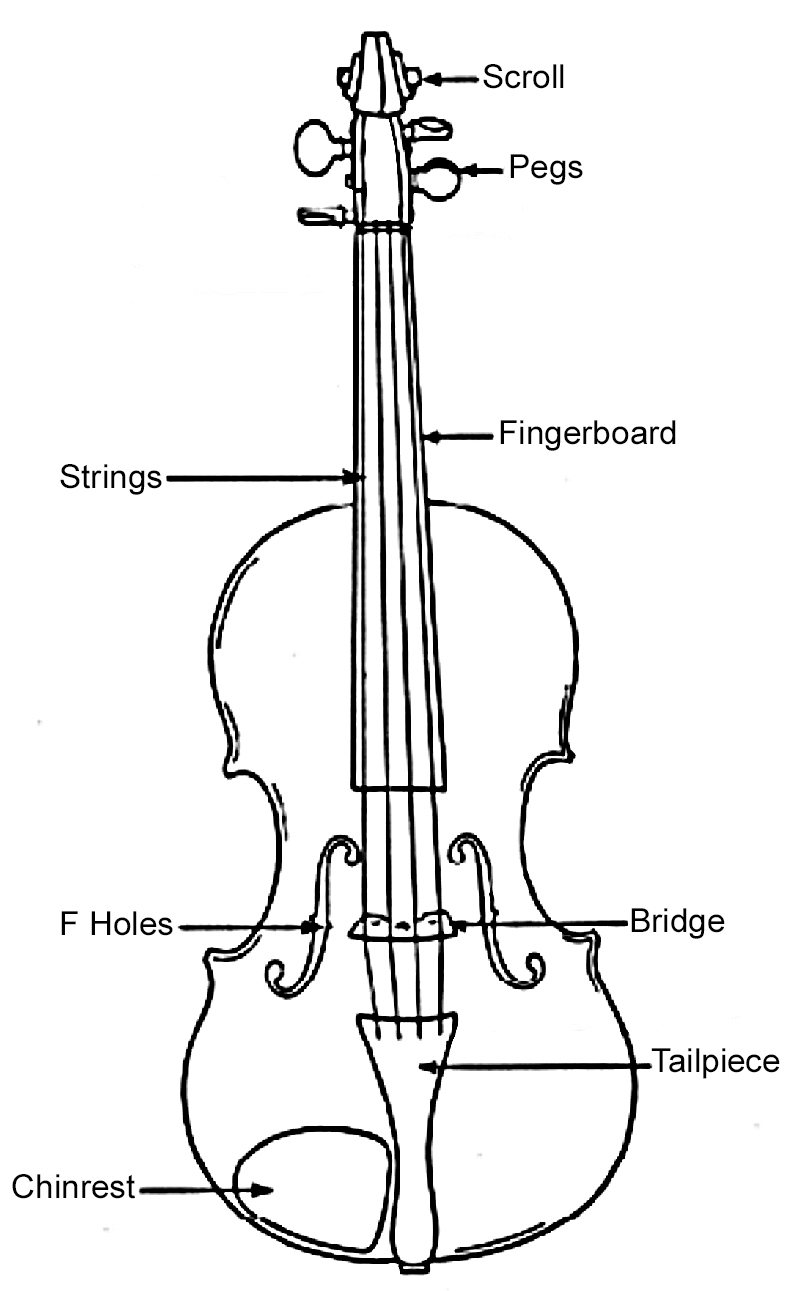
Parts of the violin
Listen Anatomy of the Violin With a powerful, emotionally evocative tone that ranges from deep throaty sound to singing high notes and harmonics, the violin is an instrument that rewards practice and dedication.

What Are the Different Parts of a Violin? [Infographic] Violin, Violin teaching, Violin beginner
The scroll of a violin is a decorative and spiral-shaped carving of wood at the top end of the instrument. It sits above the neck of the instrument. It is attached to the pegbox, which houses the tuning pegs. The scroll is typically made from the same type of wood as the neck and the rest of the instrument.
:max_bytes(150000):strip_icc()/close-up-on-the-bridge-of-a-violin-527707301-5aa0dcff875db90037687346.jpg)
Parts of the Violin and Their Function
The name fiddle is often used regardless of the type of music played on it. The violin was first known in 16th-century Italy, with some further modifications occurring in the 18th and 19th centuries to give the instrument a more powerful sound and projection.
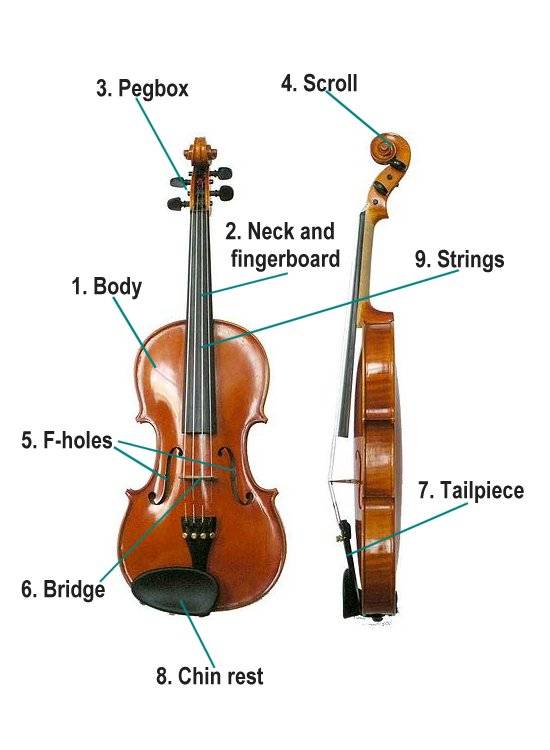
Music for Kids Parts of the Violin
The Violin Bow. The bow is its own complex accessory to the violin. It's important to know what bow parts are called and how they work. The main parts of the bow are the stick, the bow hair (traditionally made of horse hair), and the frog (where you hold it as you play). To learn more about the violin bow, read my article on the bow anatomy.